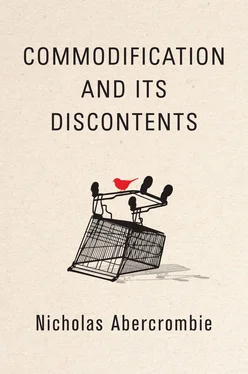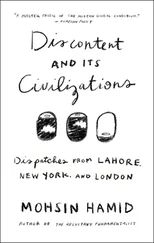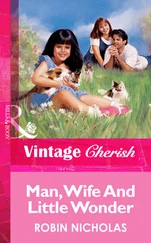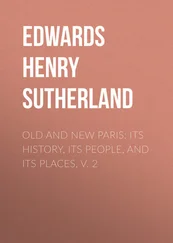Order-planning’s contribution to the ideology of town planning had a number of elements. Howard’s was the idea of the Garden City conceived as a third alternative to town life and country life. That would ‘restore the people to the land’ which is the ‘very embodiment of Divine love for man’ and would cure ‘the problems of intemperance, of excessive toil, of restless anxiety, of grinding poverty’ (Howard, 1965: 44). Garden cities combined the virtues of both town and country and would therefore act as magnets for the population. They would provide employment and amusement and, at the same time, good housing and green space, all in an attractive layout. Howard did succeed in constructing two garden cities at Letchworth and Welwyn, as we have seen, although all did not entirely go to plan, but his major legacy lies in the foundation by others of New Towns after the Second World War and, secondarily, in the layout of suburban areas in the interwar period. New Towns have been constructed all over the country although mostly within striking distance of London. The terms of reference of the New Towns Committee, which reported just after the end of the Second World War, argued that New Towns should be ‘self-contained and balanced communities for working and living’, an ambition which comes straight from Howard (New Towns Committee, 1946: Howard, 1965: 119, 121). These are revealing phrases. The towns were to be self- contained in that they provided everything – employment, amusement, transport, health and social care – and inhabitants hardly had any compelling reason to cross their boundaries. And they were to be balanced communities representing all social classes, giving a cooperative order to the settlement. F. J. Osborn, who worked with Howard and became a major force in the development of town planning in the UK, argued for the extensive development of New Towns because their size could be contained and their inhabitants could therefore enjoy ‘the inalienable advantages of comfort in their houses, beauty and grace in their surroundings, sunlight, fresh air, health and a share of civic powers’ (quoted in Whittick, 1987: 25).
Garden Cities and New Towns were one order-planning response to the disorderly city. Others were the doctrine of green belts, the often visceral antipathy to suburban development, together with associated moves to preserve the countryside and coastline. These were all symptoms of the same condition. As much as anything else, green belts, constraints on ribbon development, prohibitions on rural building and New Towns were effectively designed to contain cities and towns, to stop the spread of contagion. If uncontrolled, buildings would appear in every pretty country village, despoil beauty spots and corrupt the coastline. The County of London Plan (Forshaw and Abercrombie, 1943) sought to develop the already existing green belt around London which, in addition to forming ‘the main place of week-end walking, bicycling, picnics, etc.’, served to restrict the outward growth of the city and prevent the agglomeration of urban units. Similar ideas of extending existing green belts generally introduced in the interwar period informed other city plans. A 1941 plan for Birmingham, for example, proposed green belts to prevent separate towns from growing together to create ‘huge urban areas’ (Birmingham Bournville Village Trust, 1941).
The invasion of the countryside by the suburbs of towns was of particular concern in the first half of the twentieth century, especially in the interwar period when there were few restrictions on building at low density along roads. This ribbon development excited often furious resentment widely and not just in the planning profession. (For a literary survey see Carey, 1992: ch. 2. Poets could be particularly scathing.) Disease imagery abounded. Clough Williams-Ellis, the founder of Portmeirion, for instance, declared: ‘The disfiguring little buildings grow up and multiply like nettles along a drain, like lice upon a tape-worm’ (Williams-Ellis, 1928: 162); or Abercrombie again: ‘The aesthetic fault of the ribbon is simple: it is an urban formation purely, but it is thrust into the comparative naturalness of the country. It is like a cancer – a growth of apparently healthy cells but proceeding without check or relation to the whole body’ (Abercrombie, 1943: 120–1). H. Chessell invokes a different kind of horror in ‘the ribbon development of housing along the new arterial roads, and the stretching of the city’s tentacles far out into the countryside, with all that implies’ (n.d.: 20).
It is when confronted by the despoliation of the countryside that the language of commentators reaches its most strident. So, for them, country is country and town is town. They each have their virtues but they should not be allowed to mix. The countryside is quiet, slow, old and the province of nature. The town is noisy, fast-moving, brash, new and the product of human dominion over nature. This distinction between the two ways of life is, of course, a familiar one. The arguments of Thomas Sharp, a planner and academic writing in the 1930s and 1940s, is characteristic of the tendency. He is vehement that town and country must not be mixed for that would be to destroy both; the countryside must be ‘defended against the suburban flood which during the last two decades has threatened to overwhelm it, which has, indeed, already overwhelmed great tracts of it’ (Sharp, 1945: 145). Howard Marshall is even more apocalyptic about the destruction of the countryside which is spreading like a ‘prairie fire’. ‘The jerry-built bijou residences creep out along the roads. Beauty is sacrificed on the altar of the speeding motorist. Advertisements and petrol stations and shanties ruin our villages. A gimcrack civilization crawls like a gigantic slug over the country, leaving a foul trail of slime behind it’ (Marshall, 1937: 164). And it is not simply a question of intrusive, ugly buildings in the countryside. It is as much the kind of people that will come to live in the buildings or visit the places that causes trouble. Trippers, motorists or even simple visitors to the seaside all come in for a share of abuse. A. G. Street, for example, declares that; ‘The charges of destroying and shabbying the countryside then can definitely be laid at the door of the townsman – by his town encroachment for building and other needs, and by his bad manners during his visits to rural England’ (Street, 1937: 124). Bad manners evidently encompass the dropping of litter, driving too fast, talking loudly late at night, leaving gates open and trespassing on private property.
It is difficult to ignore a nostalgic tone in much of the town planning literature of the Long Century (see particularly Williams-Ellis, 1937). There is a harking back to a largely imaginary, ordered society, predominantly agricultural, characterized by ‘balanced’ communities of long standing where there were established social hierarchies in which everyone knew their place. As Hugh Massingham has it:
It was the land, the place, that made all the difference between then and now. The holdings varied in extent, but the holders, yeomen or cottagers, ate the same kind of food, spoke the same dialect and shared the same knowledge … because everything within the boundaries of the parish … was of intimate concern to their daily lives. (Massingham, 1937: 19)
There is one further characteristic of order-planning that is implicit in much of the foregoing. Although an emphasis that declined somewhat in the later years of the twentieth century, much of the planning literature is concerned with beauty, the aesthetic qualities of civic design. For Unwin, it does not matter if there is a good water supply and proper sanitation in these houses if the houses remain dreary. What is needed is the ‘vivifying touch of art’ so that ‘something of beauty may be restored to town life’ (Unwin, 1909: 4). George Scott-Moncrieff waxes still more lyrical: ‘The value of a W.C. is vastly overrated when it is set above that of the aesthetic. An ugly house with a bath is less of an asset than a beautiful house without one’ (1937: 270). Bertram offers a more systematic account. For him, beauty is a question of order and modern towns are disordered, being a ‘jumble of styles and no styles, of sizes and purposes and colours and materials’. We have forgotten how to build a street, which should be ‘designed right through like a poem or a symphony or a picture’ and be ‘an orderly civilised cohesive expression … of life and business’ but is instead ‘a miscellaneous collection of more or less rival bits’ (1939: 21, 23).
Читать дальше












